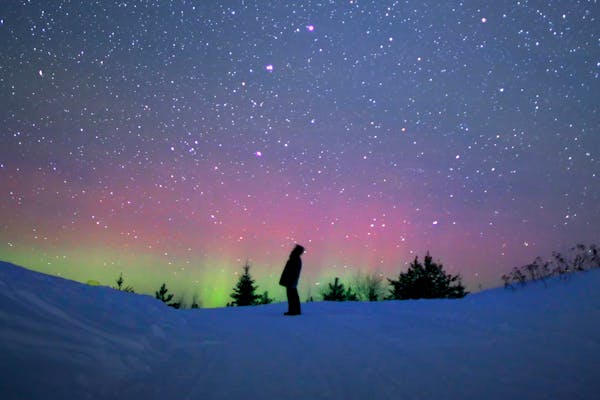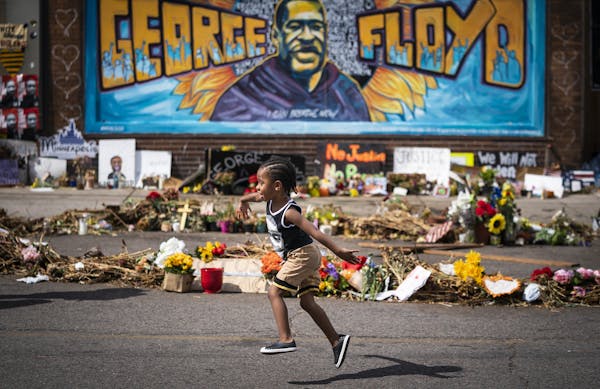How did Minn. become one of the most racially inequitable states?
Listen and subscribe to our podcast: Via Apple Podcasts | Spotify | Stitcher
By almost any measurement, Minnesota is plagued by racial disparities. In unemployment statistics. In the percentage of people in poverty. In homeownership. And in other areas as well.
Several readers wanted to know what's behind the inequities and contacted Curious Minnesota, our community-driven reporting project fueled by questions from readers.
First we needed to make sure the inequalities are still among the nation's worst.
We analyzed disparities between whites and blacks, using the American Community Survey, which was conducted by the U.S. Census Bureau between 2013-2017.
We found that while conditions of blacks are frequently no worse in Minnesota than in other states, the disparity — the gap between whites and blacks — is among the largest in the country.
For example, poverty among whites in Minnesota is about 7%, while the rate is more than four times higher at 32% for blacks, the third biggest gap in the country.
Statewide unemployment was 8% for blacks compared to 3% for whites, the fourth biggest gap; and U.S. Department of Education data shows reading test scores of black fourth-graders are much lower than whites, the second widest gap of the 41 states that tested enough black students.
Gaps also exist between Hispanics and whites, although not as pronounced. American Indians are poorer than any group, but it's difficult to compare states because the Indian population is too small in many states.
The reason for Minnesota's very large black-white disparities, compared to other states, has been a puzzle.
It is referred to as "the Minnesota paradox" in a 2018 book co-authored by Prof. Samuel L. Myers Jr., director of the Roy Wilkins Center of Human Relations and Social Justice at the Humphrey School of Public Affairs at the University of Minnesota.
Myers contends that the large gap is largely due to special benefits made available over time to the white population that's led to substantially higher wealth than blacks. And he argues that wealth results from the favored treatment whites have long received from banks in making loans.
In a study co-authored by Myers in 2015, lending practices of the 50 largest banks in the Twin Cities were analyzed from 2008 to 2013. The study found that local minorities are disproportionately more likely to have their loan applications rejected, and the gap in loan denial rates is not solely due to applicants' socio-economic characteristics, such as credit risk or applicants' income.
"How is it possible for poorly educated whites to have homeownership that is higher than middle income, well-educated blacks?" Myers asked. Those disparities have historical roots that go back decades, he argues. He said many white veterans returned from World War II, got jobs and were able to buy modest homes with government assistance.
Indeed, homeownership rates underscore disparity gaps: 76% of households headed by a white person own their home, compared to 24% for blacks, third widest gap in the nation.
"Owning the land is what gives people stability in their lives, to build community and to build wealth," said Kirsten Delegard, a public historian and director of Mapping Prejudice, a project which has uncovered 30,000 so-called racial covenants in deeds in Hennepin County. The covenants, which bar blacks from buying in white designated neighborhoods, were written into deeds between 1910 and 1950.
The privileges of whites go back much further, Delegard and Myers argue, to when American Indians were forced off their land in the 1860s.
"You have a legacy of asset accumulation in Minnesota [by] white people [that] can't be explained by education, by training, by family structure, by native ability or intelligence," Myers said.
The country was founded on white supremacy, says Mahmoud El-Kati, history professor emeritus at Macalester College. Whites in Minnesota, he says, expect the problems to be solved by black people, but they cannot be solved without help from white people and institutions that are controlled by whites.
Prof. Lawrence Jacobs of the Humphrey School of Public Affairs at the University of Minnesota, agrees.
"There are disparities and these advantages have been institutionalized," he said. While he thinks white privilege has been pivotal to creating disparities, he says mobilizing politically around the issue will backfire. "If you are running a campaign around white privilege, you are not going to build much of a coalition with white working class voters on the Iron Range who have not had a job in six or eight years," he said.
Doug Hartmann, chair of the sociology department at the U, said "the real privilege and wealth and general success of whites in Minnesota is at such a high level that it creates a gap."
In Minnesota, he said, a more subtle "post civil rights" racism exists among Minnesotans, who often like to think of themselves as liberal.
"It actually kind of blinds them to not only see these racial gaps as well as the problems in our society and institutions which are perpetuating those gaps," he said. "Basically we so want to believe we are not racist, we are blind to color. We don't even see the way that race still matters."
---
If you'd like to submit a Curious Minnesota question, fill out the form below:
Read more Curious Minnesota stories:
Why does everyone love to hate Edina?
Sorry, but why do Minnesotans say 'ope' all the time?
How did these 11 Minnesota towns get their unusual names?
Has Minnesota every had a major earthquake?
How did the Twin Cities become a hub for Somali immigrants?
Why was Minneapolis' mansion street destroyed, but St. Paul's survived?
Why won't anyone in Minnesota take the last piece of food?
Why is Uptown south of downtown in Minneapolis?


